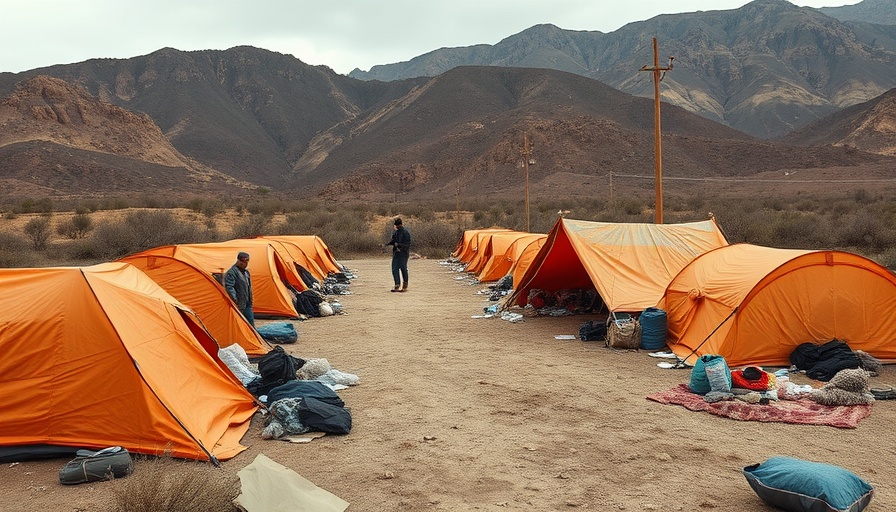
Penticton Takes Action: Eviction of Encampment Residents
In a significant move, the residents of an encampment located at Highway 97 and Fairview Road in Penticton, B.C. have officially been evicted, as announced by BC Housing Minister Ravi Kahlon. With a notice given for evacuation, outreach workers have been on site to facilitate this transition and connect individuals with available support services.
The Eviction Process Explained: A City’s Approach
The city council of Penticton, led by Mayor Julius Bloomfield, aims to manage this sensitive situation with care. According to Mayor Bloomfield, the eviction appears to be progressing peacefully, with minimal disturbances reported. The provincial government has made it clear that those being evicted from the encampment are not being left to fend for themselves. “We have a mix of people — some are just short of money and need a little support to get into housing,” Kahlon stated. To this end, 12 shelter spaces have been opened, and 40 rent supplements have been approved for individuals eager to transition into market housing.
Community Support and Available Resources
This proactive approach exemplifies the dual strategy adopted by local authorities: immediate support for those in need, and long-term housing solutions. The emphasis on outreach indicates an acknowledgment of the nuanced challenges faced by individuals residing in encampments. Kahlon further noted the ongoing discussions with local First Nations and city officials in pursuit of more sustainable housing options. This collaborative dialogue aims to equip residents with the resources they require for a stable living condition.
Long-Term Solutions: Looking Ahead
While the immediate action to close the encampment was necessary, the emphasis on long-term solutions raises important questions regarding the sustainability of housing in Penticton. The city is facing a growing demand for affordable housing, reflecting broader trends in communities across Canada. With the rising cost of living, many individuals and families are struggling to find a stable home. Experts believe that rejuvenating local economies with adequate housing solutions is essential for improving the general wellbeing of communities.
The Broader Context: Understanding Encampments in Urban Areas
The situation in Penticton is not isolated. Across many urban centers in Canada, issues related to homelessness and encampments have become prevalent as economic pressures mount. In cities like Vancouver and Toronto, similar confrontations between municipal policies and homeless populations have played out, often leading to eviction notices. This phenomenon raises questions about how cities can balance public order with compassion and support for vulnerable populations.
Community Response: What the Eviction Means for Local Residents
The response from the local community and residents has varied. Some view the eviction as a necessary step towards improving city living conditions, while others worry about the implications for those displaced. As discussions about encampments continue, it’s essential to engage local voices in dialogues surrounding housing solutions. Public forums and community meetings can provide platforms for sharing perspectives and fostering understanding about the complex challenges faced by individuals experiencing homelessness.
Future Considerations: Addressing Homelessness Effectively
Moving forward, the challenge will lie in addressing homelessness through innovative solutions. Local governments must collaborate with non-profits, grassroots organizations, and community members to design comprehensive housing strategies that include supportive services. Recognizing that homelessness arises from diverse issues—including economic hardship, mental health, and addiction—can inform policies that genuinely assist those affected.
Taking Action: Encouraging Community Involvement
As community members, there are ways to contribute to positive change. Engaging with local organizations that assist individuals experiencing homelessness, volunteering time, or even advocating for affordable housing policies can make a significant difference. Collective action can lead to solutions that help not only the individuals facing eviction but also the community at large.
Ultimately, while the eviction of the encampment residents in Penticton is a critical first step, a more humane and sustainable solution will require ongoing commitment, collaboration, and community understanding. Advancing these discussions can pave the path toward a healthier, more inclusive environment for all.
 Add Row
Add Row  Add
Add 




Write A Comment